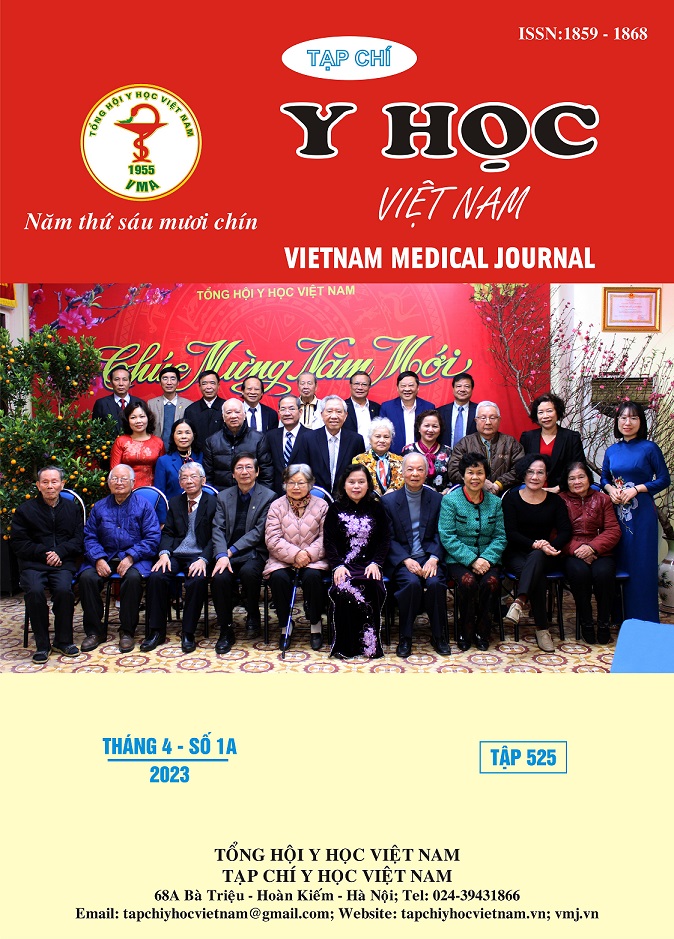RESULTS OF SURGERY TO TREATMENT INTESTINAL OBSTRUCTION DUE TO THE FOOD BLOCK
Main Article Content
Abstract
Background: The study aimed to evaluate the results of surgery for intestinal obstruction due to the food block at Nghe An Friendship General Hospital and E Hospital. Materials and Methods: Retrospective descriptive study, patients undergoing surgery to treated intestinal obstruction due to the food block from 2019 to 2021. Results: There were 45 patients diagnosed with intestinal obstruction due to the food block and treated by surgery, the mean age was 64.82 ± 17.64 (14 – 98) years old, the female/male ratio was 1.37/1. 42.2% had a history of surgery, of which 26.6% had a history of gastric surgery. 44.4% have a favorable food factor that is eating persimmons. 100% abdominal pain, 91.1% vomiting, 95.6% bowel obstruction and 88.9% abdominal distension. 28.9% of abdominal ultrasound identified food residue and CTscaner was 61.4% identified intestinal obstruction due to food residue. 88.9% open surgery and 11.1% laparoscopic surgery, 66.7% was conducted to put food residue into the colon. The mean operative time was 59.40 ± 22.60 (45-112) minutes, 8.9% had complications after surgery: wound infection, early intestinal obstruction and pneumonia, there were no cases of death during and after surgery. The mean hospital stay was 8.04 ± 1.82 (4-12) days. Conclusions: Surgery to treatment intestinal obstruction due to the food block is a safe and effective method, patients recover soon and a short hospital stay.
Article Details
Keywords
Surgery intestinal obstruction, intestinal obstruction due to the food block
References
2. Jordan M, Steinberg, Arieh Eitan (2003): Prickly pear fruit bezoar presenting as rectal perforation in an elderly patient. Int J Colorectal Dis, 18: 365-367.
3. Ji-Hoon Kim, Huyn Kwon Ha, Min Jee Sohn et al. (2003): CT findings of phytobezoar associated with small bowel obstruction, Eur Radiol, 13: 299-304.
4. Moriel Evyatar Z, Amram Ayalon, Ahmed Eid, Damiel Rachmileitz, Micheal M Krausz, and Arie L Durst (1983): An unusually high incidence of gastrointestinal obstruction by persimmon bezoars in Israeli patients after ulcer surgery, Gastroenterology, 84, 4: 725-55
5. Trần Hiếu Học, Nguyễn Ngọc Bích, (2006), Một số nhận xét về tắc ruột do bã thức ăn điều trị tại khoa Ngoại bệnh viện Bạch Mai trong 7 năm (1999- 2005). Tạp chí Y học lâm sàng, số đặc san bệnh viện Bạch Mai năm 2006, tr 27-32.
6. Ragarri-R.; Dimartino-G.; Sentina-A.; Alberghina-G.; Dimartino-A.; Lucenti-S, (1991), Intestinal occlusion caused by ileal phytobezoar, Menerva-Chir, Dec; 46 (23-24): 1285-7.
7. Schoff V, Varatorn R, Blinnikov O, vidamaly V, (2004), Intestinal obstruction due to phytobezoar of banana seeds: a case report. Asian J Surg, Oct; 27(4): 348-51.
8. Krausz MM, Moriel EZ et al. (1986): Surgical aspects of gastrointestinal persimmon phytobezoar treatment, Am J Surg, 152(5):526-30.


